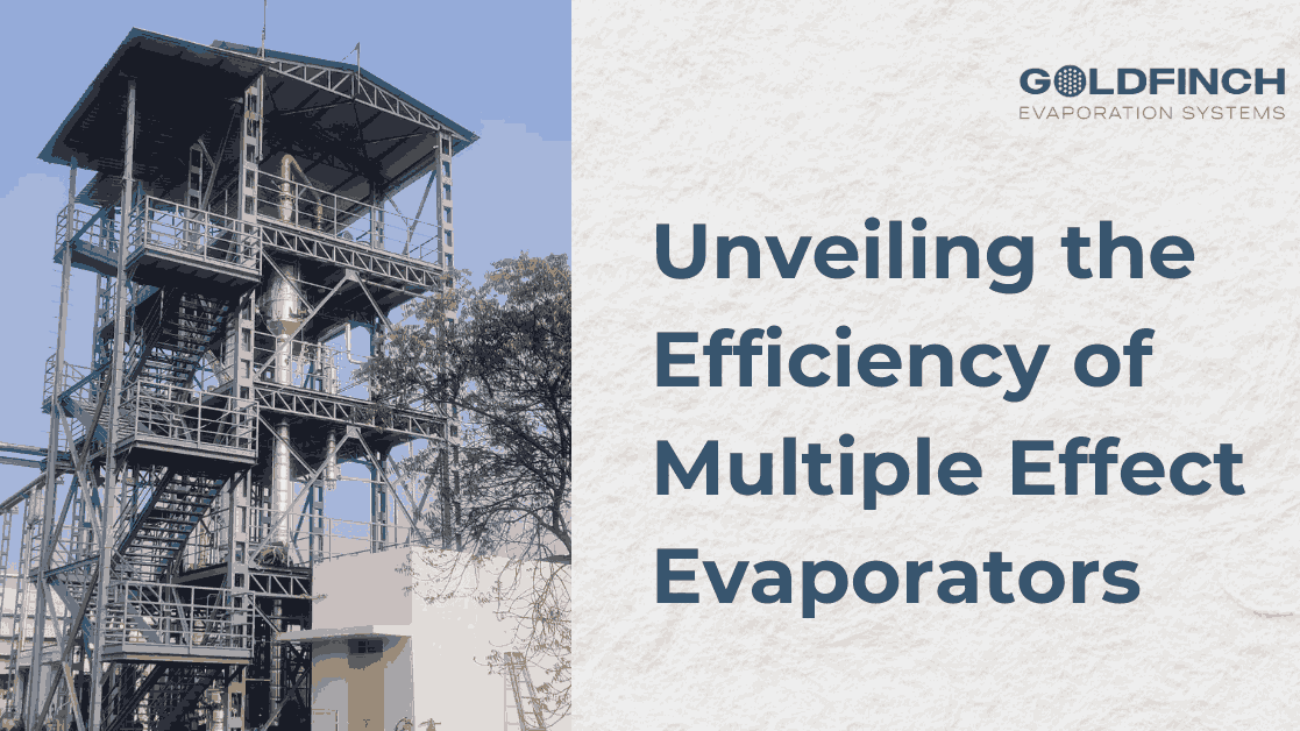Multi-Effect Evaporators MEE
Multi-effect evaporators are integrated systems employed for the effective evaporation of water or solvent from a feed. In these systems, multiple evaporators are incorporated to achieve better energy efficiency to the level that the vapor produced in the first stage is used to heat the subsequent stage. MEEs are widely recognized for their ability to minimize operational costs and optimize energy usage.
What is a Multiple Effect Evaporator?
A Multiple Effect Evaporator involves the structured sequencing of evaporators to remove water from a liquid feed through evaporation. The system leverages the principle of reusing vapor energy from one stage to the next, significantly reducing the need for external energy sources.
Three-Effect Evaporator Design Feed Arrangement
Three-effect evaporators are configured to maximize energy efficiency and accommodate varying feed requirements. The primary feed arrangements include:
- Forward Feed: The liquid flows in the same direction as the vapor, ensuring energy efficiency for feeds that are heat-sensitive.
- Backward Feed: The liquid moves opposite to the vapor flow, which is ideal for concentrated feeds.
- Mixed Feed: A combination of forward and backward feeds for tailored applications.
Applications for Multiple Effect Evaporators
MEEs are employed across various industries for:
Dairy and food processing involves the concentration of milk, juices, and other fluids.
Pharmaceuticals are used for extracting the active ingredients and concentrating solutions.
Chemical processing involves solvent recovery and separation of chemicals.
End treatment of industrial waste becomes volume reduction and recovery of useful materials.
Multiple Effect Evaporators (MEE) for Industrial Wastewater
Industrial wastewater treatment is one of the most critical applications of MEEs. These systems effectively reduce the volume of waste by separating water and contaminants, enabling industries to meet stringent environmental regulations and reduce disposal costs.
Forward Feed Multiple Effect Evaporator
Forward feed systems are ideal for liquids with low boiling points and heat-sensitive properties. The liquid feed enters the first evaporator and flows in the direction of the vapor, ensuring consistent heat transfer and reduced thermal degradation.
Backward Feed Multiple Effect Evaporator
Backward feed systems are designed for highly concentrated or viscous feeds. The liquid moves opposite to the vapor flow, ensuring effective heat transfer and optimal concentration levels.
Forward Feed vs. Backward Feed Arrangement Design
| Feature | Forward Feed | Backward Feed |
| Direction of Flow | Liquid and vapor flow in the same direction. | Liquid and vapor flow in opposite directions. |
| Energy Efficiency | Suitable for heat-sensitive feeds | Ideal for concentrated or viscous feeds. |
| Thermal Efficiency | High | Moderate to high depending on application. |
MEE Evaporator Principle
The principle behind MEE systems is the sequential reuse of vapor energy. By utilizing the vapor from one evaporator to heat the next, MEEs achieve substantial energy savings and operational efficiency.
Considerations for an Optimal Multiple Effect Evaporation Equipment Design
Efficient MEEs are designed with the following considerations:
- Heat Transfer Efficiency: Enhanced by selecting materials with high thermal conductivity.
- Liquid-Vapor Separation: Ensures effective separation to improve product quality.
- Energy Efficiency: Incorporates vapor recompression and advanced control systems.
What is the best multiple-effect evaporator for wastewater treatment?
The best MEE for wastewater treatment depends on factors such as feed composition, required concentration, and energy efficiency needs. Goldfinch’s range of MEEs offers tailored solutions to meet industrial requirements.
Why Use Multiple Effect Evaporators?
MEEs are indispensable for industries aiming to:
- Achieve energy efficiency.
- Reduce waste volume.
- Recover valuable by-products.
- Meet environmental regulations
Energy Savings Using MEE Evaporation System
MEE systems significantly reduce energy consumption by reusing vapor energy across multiple stages. This reduces operational costs and carbon footprints, making them a sustainable choice.
Advantages of Forced Circulation MEE Evaporators
Forced circulation MEEs enhance performance through:
- Improved Heat Transfer: Facilitates the handling of viscous liquids.
- Reduced Fouling: Minimizes scaling and ensures consistent operation.
- High Efficiency: Ideal for feeds with high solid content.
Conclusion: The Future of Evaporation Technology
Goldfinch Evaporators have been at the forefront of MEE technology in India for over four decades. Specializing in innovative vapor recompression solutions, Goldfinch’s MEEs deliver unparalleled efficiency and performance across industries. Explore our compact range of MEEs designed to revolutionize wastewater treatment and industrial processes.
To know More Visit This Link –


